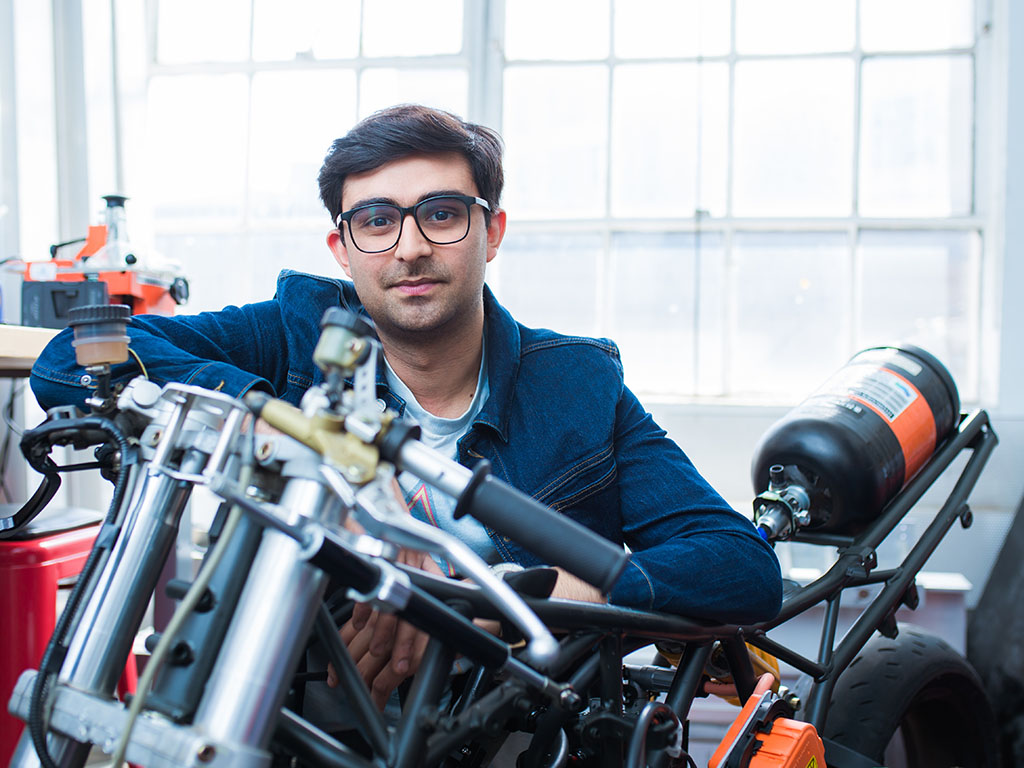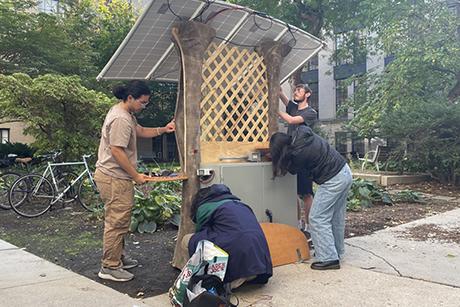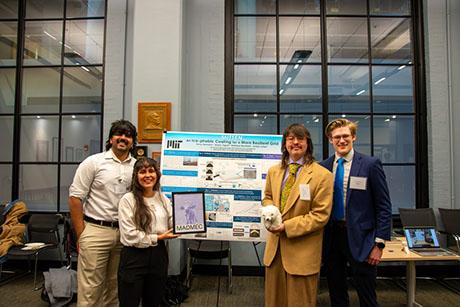Designing cleaner vehicles
Graduate student Adi Mehrotra ’22 is developing sustainable solutions in vehicle design
Fueled by curiosity and a love of science, second-year graduate student Adi Mehrotra ’22 is working on sustainable solutions in vehicle design, including the design for a hydrogen-powered motorcycle. The motorcycle, which is designed on an open-source platform, underwent its first full test-track demonstration in October.
Mehrotra majored in electrical engineering and computer science as an undergraduate, but says he was drawn to mechanical engineering and took as many MechE classes as he could. During his junior year, Mehrotra joined Professor Sangbae Kim’s Biomimetic Robotics lab — a decision further cemented a passion for mechanical design and sparked an interest in vehicle design. He now heads up a “revamping” of the MIT Electric Vehicle Team (EVT), a student-led research team that is probing the future of transportation.
 Adi Mehrotra ’22 is working on sustainable solutions in vehicle design, including the design for a hydrogen-powered motorcycle.
Adi Mehrotra ’22 is working on sustainable solutions in vehicle design, including the design for a hydrogen-powered motorcycle.The EVT, which has a long history of research into renewable energy and electric powered vehicles, has been working on building the hydrogen-powered motorcycle prototype since January 2023. Unlike the team’s past projects, this vehicle will not be entering races or competitions. Instead, it will be taken to conferences with the goal of starting conversations around “small hydrogen” systems and perhaps increase demand or lead to more infrastructure development.
“Initially the goal was to build something cool, but through research for the project we found that sources and knowledge-bases for hydrogen-powered vehicles were limited in scope and much of the details of the technology were proprietary. We concluded that a project that focuses on an open-source hydrogen engine would be important to building a cleaner future.”
With safe and intelligent surrounding vehicle designs, the team believes that hydrogen could be the future of transportation, solving the long charge times of electric vehicles, addressing the power density issues of solar vehicles, and, with super capacitor technology, eliminating the need for heavy, and harmful lithium batteries.
This article appeared in the Spring 2024 edition of our magazine, MechE Connects. For more stories, and for past issues, please visit meche.mit.edu/magazine.

